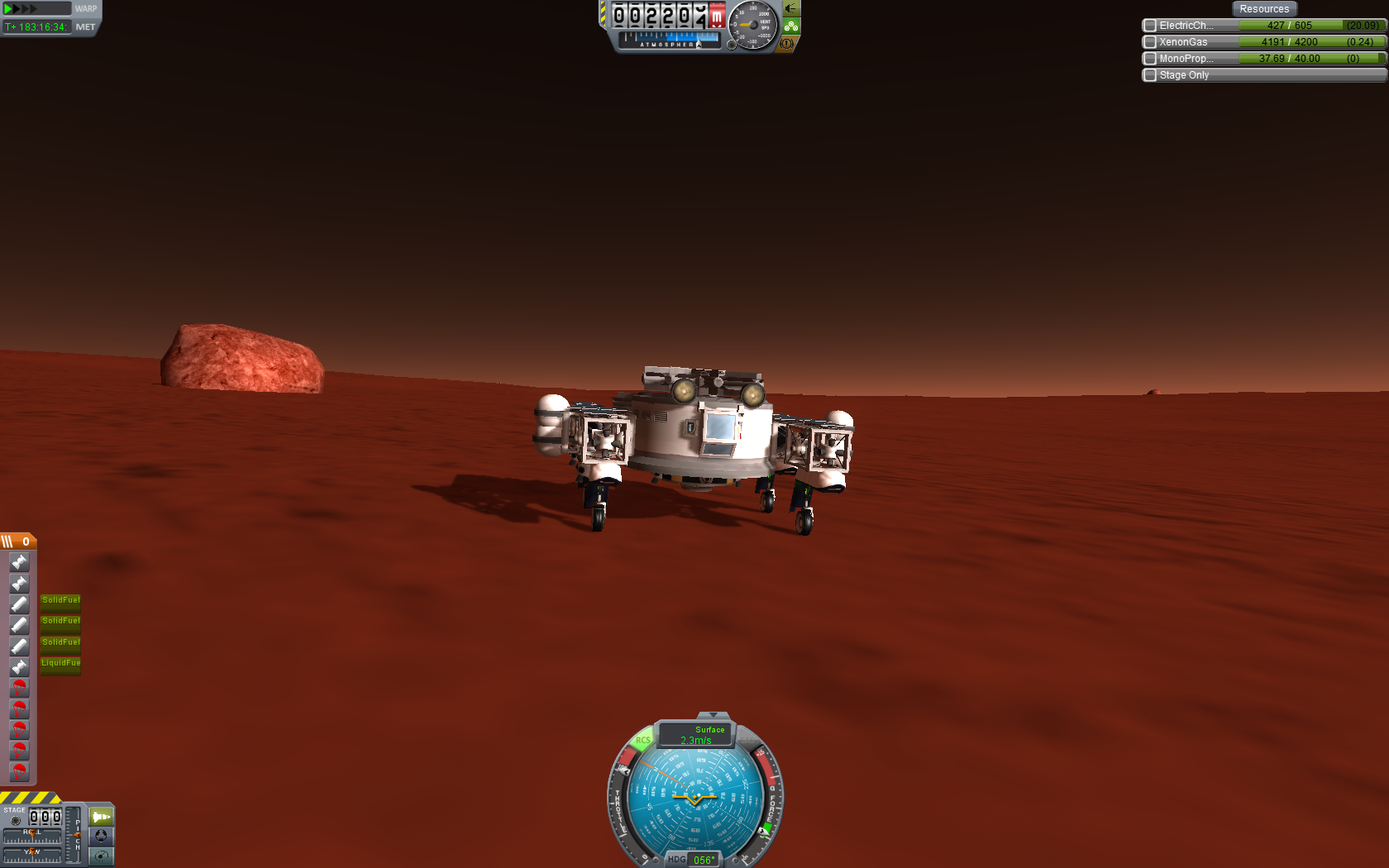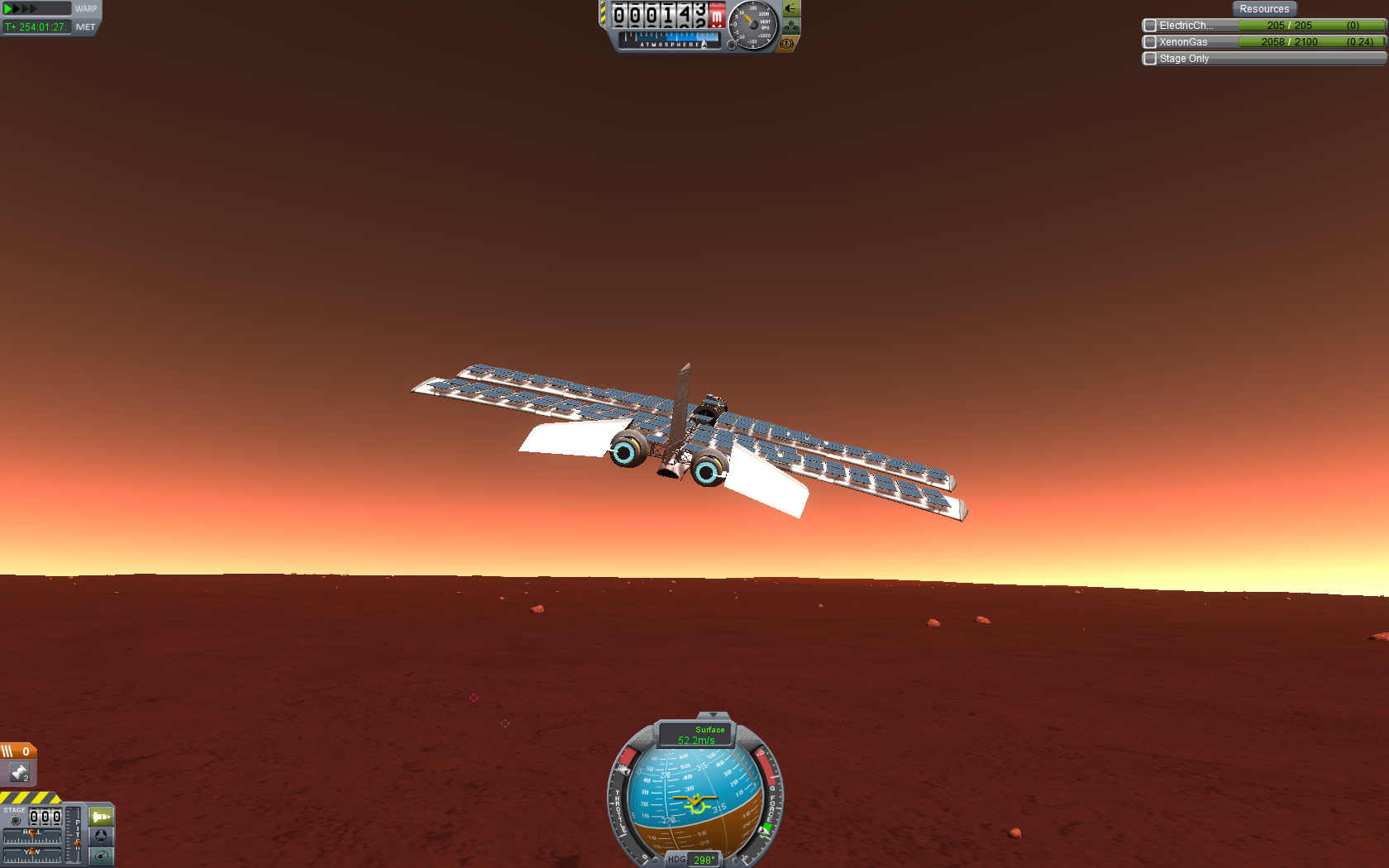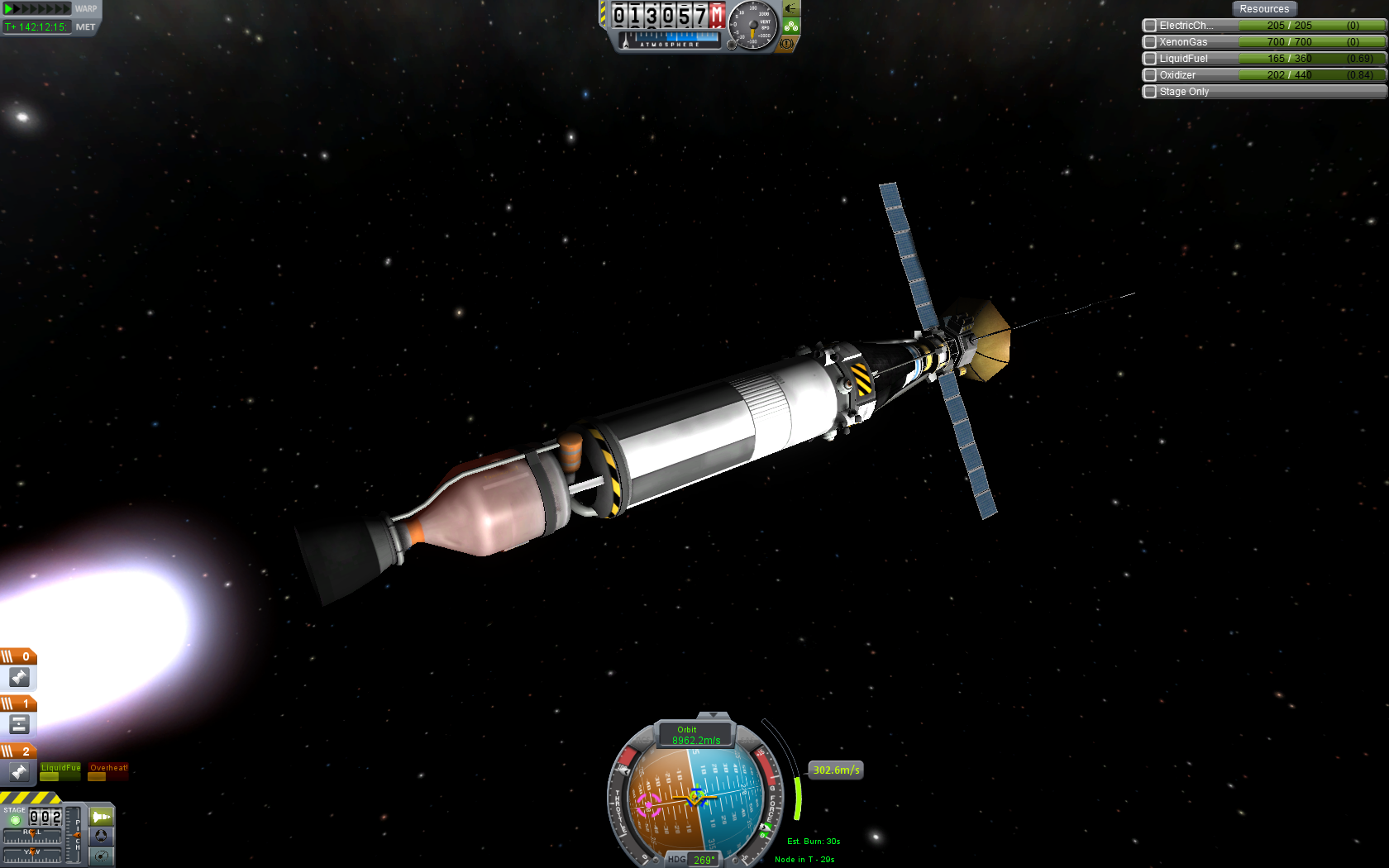In the past we have always been on the forefront of technological development. In fact we were the first nation that ever landed on the Moon (even though at the cost of many lifes).
But we became painfully aware that we were left behind by small nations like Poland, Kenmark, West Kermany, etc, and this can not go on.
At last the discovery of new planets has revived our governments interest in space exploration. Because of our space budget being so small, Congress passed the first budget increase since I came into office, and this means we can begin a new phase in the space race.
While we will continue the search for the most simple, inexpensive propulsion systems, I also started a research project to develop a much larger rocket. One that can could reach much more distant targets like Dres and Eeloo, and carry substantial payload.
The research project came up with "Jool", a rather powerful rocket, but still within our budgets limits.
Jool 1-A
total weight: 137.5 tons
Total deltaV: 13,400 ms
Vmax reached from Kerbin: 8,500m/s with 1.5t payload (this is the "dumb" vertical takeoff test). If the payload includes another propulsion system, much higher speed could be reached.
We did not test the with only the minimal probe core, but that configuration could exceed 10,000 m/s.
JOOL-1A.craft
Among a million of other things, we are very proud that we were the nation that invented the computer. And this allowed us - for the first time - the development of a new rocket by actual calculations! We are very surprised that we actually achieved results!! The formula to calculate is:
deltaV = Isp * g * ln (m1/m2)
Here you can see how powerful our computers have become:
launch_vehicle.jpg
Interplanetary stage (J-3A)
weight: 11.35t
total weight (including payload): ~12.35t
*(1)
thrust: 60
deltaV: 8189 m/s
*(2)
*(1) other configurations are possible. For example we could exchange some tons of fuel for more payload, with decreased performance.
*(2) performance could be further increased by asspergers staging. There is still over a ton of dry weight in the tanks, and we know that.
For the design of our upper stage we compared the Nuclear Engine (NERVA) and the LV909.
engine weight thrust Isp
NERVA 2.25t 60 800
LV909 0.5t 50 390
(I
sp is the specific impulse in vacuum)
It quickly came out that the NERVA is the more efficient propulsion for interplanetary travel. As a reminder, our previous generation used a LV909 and 1 standard FLT-800 tank (4.5t). We were quite surprised that compared to this design, deltaV could be doubled by using a NERVA, especially if we also use larger amounts of fuel!! It is ideal for interplanetary stage if the interplanetary stage uses 9 tons or more of fuel.
In the table you see the deltaV increase. (The calculation also considers a 1t payload in addition to the stage weight)
Engine Fuel deltaV (m/s)
LV909 4.5t 4079
LV909 9t 5376
NERVA 4.5t 5591
NERVA 9t 8189
However, the performance improvement in the upper stage comes with a big problem. That the total weight of the J-3 stage will increase from ca 6t to 12t!
So we had to tax our brains how to build a stage that could carry the NERVA into orbit.
Second stage (J-2A)
weight: 21.5t
total weight (including payload): 33.75t
thrust: 430
deltaV: 2332 m/s
We still find that the design of a second stage is usually the most difficult, and the one where most mistakes were made in the past.
Our research considered 3 engines:
engine weight thrust Isp
LV909 0.5t 50 390
Rokomax 2.5t 220 390
LVT-30 1.25 215 370
The LVT-45 was not considered, because it is heavier and delivers less thrust than the LVT-30. The vector thrust is not required. NERVA engines are totally unsuitable for the task, because their Isp in athosphere is worst, the engines are much heavier and deliver less thrust.
At first, the Rokomax and the LV909 appear ideal because of their high Isp in vacuum (390). This lead us to some proposals which deliver a lot of deltaV on paper. But in practice these stages do not fly because their thrust is too low.
Keep in mind that a "real" second stage is supposed to be able to bring the third stage into orbit. If you have to battle with your third stage to even reach orbit, it is not good design. That means, our stage must reach ca 2400 m/s, with a payload of 12t! And for that, you require a lot more thrust than these two engines can deliver!
Our experience is that designs with the LV909 and Rokomax engines struggle a long time to overcome gravity, and still end up way short of orbital speed. Even if you combine enough LV909s to get enough thrust, their total weight becomes a factor. The "large" Rockomax engine fares even worse than the LV909, because it has even less performance than 5 LV909 combined! In the end, designs relying on these two engines (Isp 390) proved fruitless.
Our end result is that as long as you keep it simple, the LVT-30 is the best engine for a second stage. Although it's specific Impulse is lower, it delivers a lot more thrust compared to its weight.
Our J-2A uses two combined LVT-30s and 18 tons of fuel. resulting in a deltaV of ca 2300 with ca 11.5tons of payload.
It does not always reach the orbital speed requirement, but is so close that only a small push with the third stage is needed.
First stage (J-1A)
weight: 103.75
total weight (including payload): 137.5t
thrust: 1505
deltaV: 2963 m/s
The design of the first stage was the easiest, because we had a lot of experience with this. We already knew that LVT-30s with 3 FLT-800 tanks deliver excellent performance. For our J-1A stage we combine 7 of these, resulting in 94.5 tons of fuel and a total thrust of 1500. Considering a payload of 33.75 tons (for the other stages) this results in a total mass of 137.5t.
We find this design superior to a big Rokomax engine, because while it is roughly equal in thrust and weight, it delivers much better efficiency (Isp 320 versus 280).
A design with Aerospikes may be somewhat better, but we made it our principle to not use Aerospikes for a number of reasons.
In practice the first stage burns out after 3minutes, at ca 900ms / 40km, a height on which the engines in the second stage have their full efficiency.












































